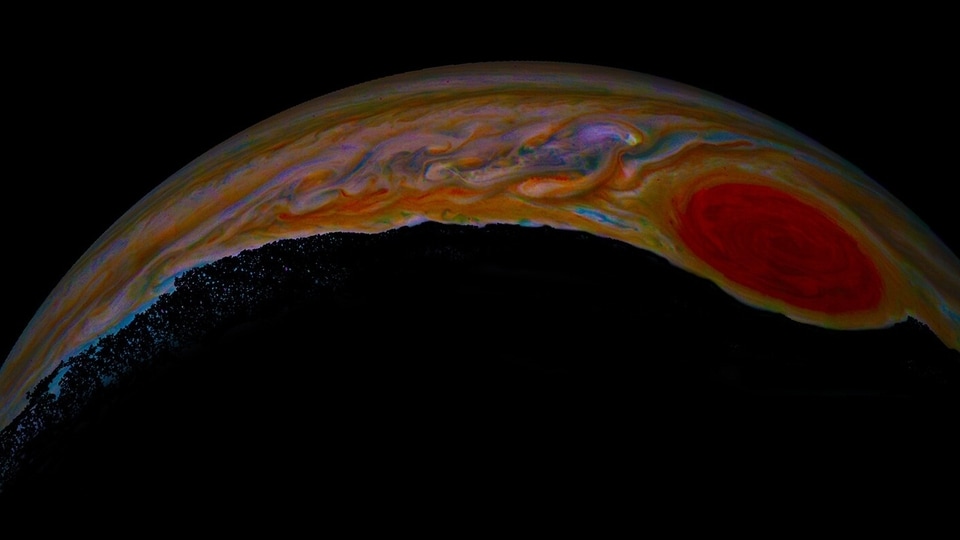NASA says largest storm in the solar system, Great Red Spot of Jupiter, is Shrinking!
The largest storm in the solar system which is located in the heart of Jupiter is shrinking, says NASA. Know why the Great Red Spot is behaving in a bizarre manner.

The universe is filled with unimaginable phenomenons. One such is the largest storm in the solar system called the Great Red Spot. This storm lies in the heart of Jupiter and its diameter is 1.3 times that of the Earth. Yes, bigger than Earth! It produces wind speed of up to 432 km/h and has existed for at least 357 years. This storm has been both an object of awe for scientists since the 19th century. But recently, NASA has observed that the storm is shrinking in its size. What is happening to the Great Red Spot? Read on to find out.
The largest storm in the solar system is shrinking
The Great Red Spot is actually a cyclone which appears like a spot as it is covered with dense clouds. Like all storms, it changes its appearance from day-to-day. It can change its shape from oval to round as well as change its color from brownish-red to white. But recently, NASA scientists have observed that the storm is shrinking. According to them, the Jupiter storm was almost three times larger about 100 years ago.
Why is the Great Red Spot shrinking
All cyclones are formed as a result of low pressure and warm temperature regions which drag air towards itself and then pushes it upwards, creating a rotating structure that makes a cyclone. Cyclones are formed over oceans where the warm and moist air creates a favorable zone for its creation. But as the cyclone hits the land, the temperature difference between land and sea, the pressure also reduces and it stops.
Although Jupiter does not have oceans and lands, it does have similar conditions due to freezing temperatures in the clouds and extremely high temperature air near the core. However, one thing going against the Great Red Spot are the other storms in the region which are chipping away at the storm. As the pressure zone outside the eye of a storm is high, adjacent storms are destabilizing the Great Red spot slowly. But does that mean the largest storm in the solar system will disappear?
Not really. Recently, the Juno space probe by NASA took pictures of Jupiter's storm and it found out that there is still a lot of energy inside the storm to let it go on for years and years. But will it eventually die? It is difficult to say as another low pressure region near its center can easily charge up the storm to go on for many more years.
Catch all the Latest Tech News, Mobile News, Laptop News, Gaming news, Wearables News , How To News, also keep up with us on Whatsapp channel,Twitter, Facebook, Google News, and Instagram. For our latest videos, subscribe to our YouTube channel.































